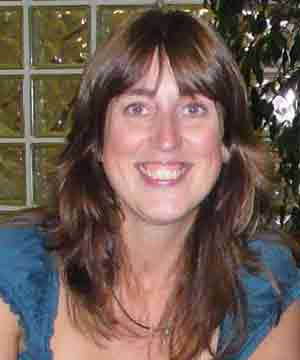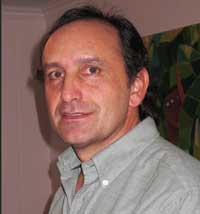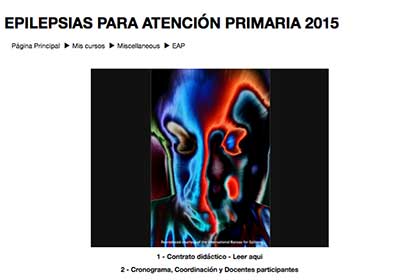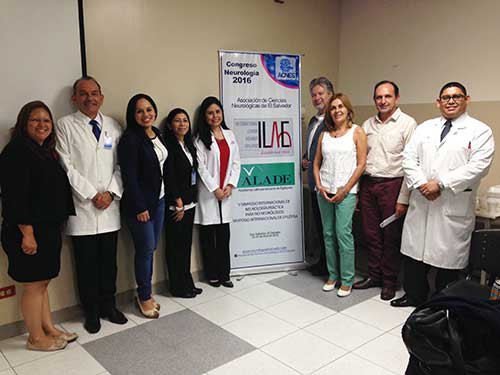Epigraph Vol. 18 Issue 2, Fall 2016
Bringing Epilepsy Education to Primary Care Initiatives in Latin America

Although significant advances in the understanding of epilepsy have been achieved, and many therapeutic options have become available, there is a persisting gap in the management of these patients. This diagnostic and therapeutic gap has a major impact in those regions where health care depends almost exclusively on primary care systems. A number of chapters of the ILAE have developed programs to train primary care physicians and bring them into the epilepsy care network. Two different approaches have been taken in Latin America to increase the understanding about epilepsy among our primary care colleagues.

The main goal of this initiative was to decrease this gap through training courses devoted to physicians and other health care professionals working in primary care settings in any country of Latin America. The first program was developed by the Education Commission of the ILAE as an online course conducted over eight weeks across multiple Latin American countries. The second was a traditional lecture series course directed toward primary care professionals. This course was linked to a regular national meeting and was organized by ALADE (the Latin American Epilepsy Academy) of the Latin American Commission together with the Latin American Commission of the IBE.
The online course
For the online course aimed at improving the understanding of epilepsy among primary care physicians, several issues were addressed. First, the organizers wanted to learn the feasibility of an online course in the region for front line health care providers. They also wanted to learn if the participants could achieve predefined learning goals on the topic, which could be measured by reliable evaluation tools. This pilot course was organized by the Education Commission of the International League Against Epilepsy (ILAE), and involved an international teaching staff of 16 volunteer instructors from across the region. The course was jointly managed with the Facultad de Medicina, Universidad de la República, Uruguay, which was responsible for the development and management of the virtual platform and online course format.
The inaugural course was held from October 5, 2015 to November 30, 2015 and included eight topic-specific modules of one week duration each. The areas covered included epidemiology, seizure semiology, differential diagnosis, diagnostic procedures, drug treatment, interaction of health care levels in management, non-pharmacological treatment basics, and social and legal aspects.
The 16-member Latin American teaching team (Table 1) developed the didactic material that was included in virtual repositories. It included teaching presentations and documents in Spanish and Portuguese, as well as learning tasks to be developed during the module. These tasks were structured as problem-solving or case-discussion exercises that were to be discussed in the forum of the module, among participants and with the tutors.
Table 1: Teaching staff of the online course, "Epilepsy in Primary Care, 2015"
Coordination:
- Patricia Braga, Jaime Carrizosa
Virtual platform:
- Gonzalo Ferreira, Carlos Costa, Pablo Uriarte
Tutors:
- Jorge Burneo (Peru-Canada)
- Eduardo Barragán (Mexico)
- Elza Marcia Yacubian (Brazil)
- Guilca Contreras (Venezuela)
- Kette Valente (Brazil)
- Rodrigo Solarte (Colombia)
- Ana Carolina Coan (Brazil)
- Alicia Bogacz (Uruguay)
- Angélica Uscátegui (Colombia)
- Katia Lin (Brazil)
- Viviana Venegas (Chile)
- Patricia Braga (Uruguay)
- Lilia Morales (Cuba)
- Laura Guilhoto (Brazil)
- Jaime Carrizosa (Colombia)
- Alvaro Izquierdo (Colombia)

It was estimated that the course would require five hours for each participant to accomplish the tasks and achieve the specific learning goals defined for each module, for a total of 40 hours for the entire course. On the last day of each module, a self-evaluation task was made available, including automatic backup with the correct answer and its explanation.
The final examination, available only online at predefined dates, was a 24-item multiple-choice questionnaire on different topics of the course. Passing the course required achieving a 60% threshold on this exam. This course provided 41 CME credits (Escuela de Graduados, Facultad de Medicina, Universidad de la República, Uruguay). The ILAE supported the effort with a budget of USD 4,000, and the course had revenues of USD 1,520. A differential inscription rate was established according to the socioeconomic status of each Latin American country.
The participants
The course had 38 participants, of which five had previous training in neurology or neurophysiology. At the time of the course, 22 worked in the first level of healthcare. Participants originated from nine different Latin American countries: Bolivia, Colombia, Costa Rica, Cuba, Honduras, Peru, Dominican Republic, Uruguay and Venezuela. The course was announced through national ILAE chapters which provided the information to their local medical associations, health authorities and their own mailing lists. Interested physicians applied and were chosen to participate based on their country (to assure a good geographic representation), academic background and involvement in primary care.
The course used the Moodle online learning platform that was designed to allow for interactive instruction as well as collaboration It was built by the informatics group of the Medical School in Montevideo (Facultad de Medicina, Universidad de la República). This effort was supported in part by the ILAE to cover the costs of maintaining the platform, and technical and administrative support for preparing the course and maintaining the records. The final examination was taken by 32 (84%) students, all of whom passed the test and seven (22%) had scores over 90%.
Course evaluation
Questionnaires for evaluation of the course were distributed: 29 students and 13 tutors replied. Students ranked the course as low-to-intermediate difficulty that required an effort of four to six hours/week. 95% rated the interactive experience as good to very good, and 97% would recommend this course to other colleagues. 20% felt confident on epilepsy patients' management before the course, and the confidence level increased to 65% after the course.
Half of the tutors had already had some experience with virtual courses; they had estimated a weekly effort of 5-7 hours during their modules. In general, the teaching experience was rated as very good to excellent. In fact, all teachers remained interested in being tutors in the future, and they even considered the possibility of developing virtual courses on other topics.
ALADE course in El Salvador
The other effort in training primary care physicians took place when the Salvadorian Association of Neurological Sciences – ACNES – organized for the fifth time at its International Practical Neurology Congress for Non Neurologists in San Salvador from the April 28-30, 2016. The organizers contacted the Latin American Academy on Epilepsy – ALADE – of the Latin American Commission of the ILAE to develop epilepsy as one of the main topics of the congress. The young audience of nearly 150 persons was mainly composed of general practitioners, family doctors, pediatricians and specialists in internal medicine. In a country with more than 10 million people and only 20 neurologists, a course in neurology for non-neurologists was considered a priority.

The course, which was taught over three days, included 12 hours of interactive teaching that covered the following themes: a) epilepsy: diagnosis and treatment b) epilepsy in primary care c) seizure semiology d) social aspects of epilepsy e) refractory epilepsy and f) case discussions for possible surgical treatment. Special emphasis was placed on considering epilepsy as a public health priority (WHO draft) and the urgent need to build up the Salvadorian Chapter of the IBE. The course allowed for frequent personal contacts to be made with people who were interested in working to strengthen the epilepsy effort nationally.
The commitment by organizers and attendees at the congress venues, Social Security Hospital and the Intercontinental Hotel, was remarkable; even after long discussions, speakers were approached for further answers and explanations on specific topics. Special thanks and recognition for their generous efforts as speakers were offered to Guilca Contreras (Venezuela), Mario Alonso (Mexico), and Jaime Carrizosa (Colombia) who were ILAE – ALADE representatives, and to Alicia Bogacz as the IBE representative. At the end of the course, there was general agreement by the participants and the organizers that such meetings on epilepsy needed to continue, not only in El Salvador, but should be jointly planned with other Central American countries.
Conclusion
The experience with these two courses emphasizes the value and need for epilepsy training for primary care physicians. The experience of the pilot course of distance education through information and communication technologies, devoted to primary care professionals in Latin America, showed positive results on all predefined specific aims of the project: attendance, feasibility and achievement of learning goals. Evaluation tools were easy to apply. Further validation with mid-term evaluation of knowledge and impact is under development. The advantage of the face-to-face traditional course was that it allowed for a more personal contact between participants and tutors. Having multiple options for teaching primary care practitioners is of great value to meet the learning styles and preferences of the participants, as not everyone feels comfortable taking an online course, nor can everyone travel to a meeting.
Current challenges can be summarized as consolidating the initiatives and optimizing the inclusion of the targeted population, particularly developing a bilingual platform (Spanish-Portuguese). Long-term challenges would include continuous updates to content, balance between stability and renewal of teaching staff, financial sustainability and adaptation to emerging technologies.
A second course has just been completed and a third online course is scheduled to begin September 26th. For more information and to register for the course, interested individuals may contact epi.aps.online@gmail.com . Further descriptions are available at 2016_ CONVOCATORIA_CURSO_ONLINE.pdf
Subscribe to the ILAE Newsletter
To subscribe, please click on the button below.
Please send me information about ILAE activities and other
information of interest to the epilepsy community